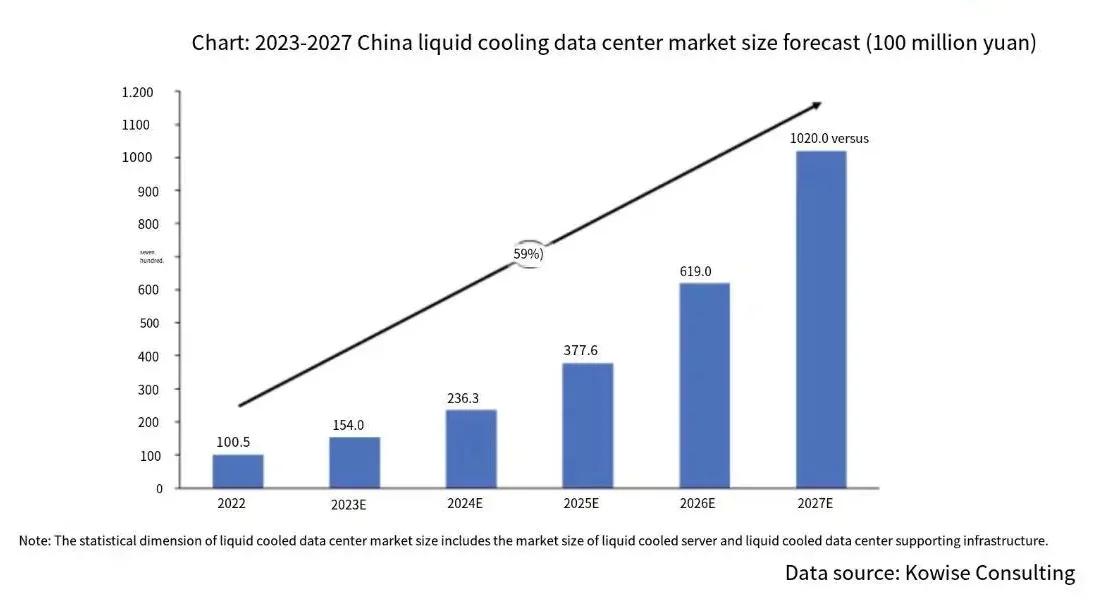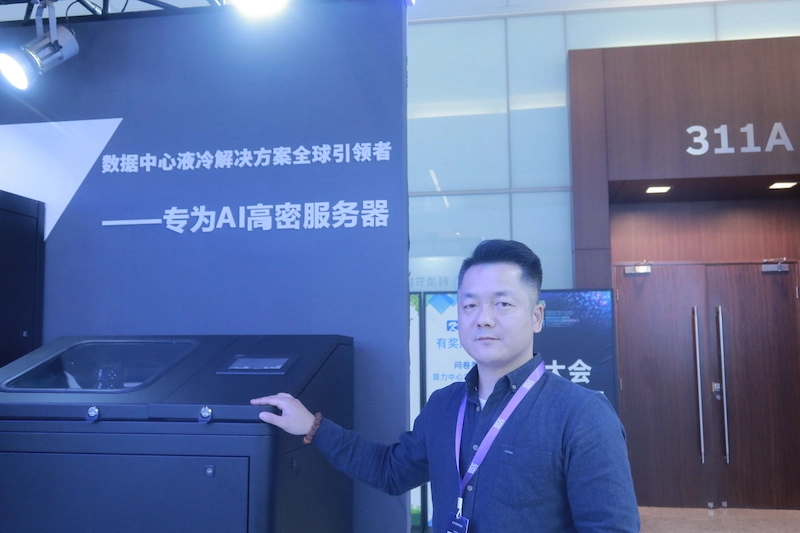- China’s liquid-cooling data centre market is experiencing a period of rapid growth, with upstream and downstream industries gradually improving.
- China’s liquid cooling is in a transition period.
- The advantages of liquid cooling in terms of energy saving and heat load are important for improving computing performance.
On December 12, 2023, at the 18th Annual China IDC Industry conference, the “China Liquid-Cooling Data Centre Market In-depth Research Report” was released and interpreted by attendees.
We invited two top industry players to discuss the current situation of China’s liquid cooling industry, an essential component of the future digital ecosystem, especially as AI advances and the cooling of high performance chips and servers is a necessity.
China’s AI computing market is expected to reach approximately CNY66.4 billion (US$9.3 billion) in 2023, an increase of 82.5% year-on-year, driven by the surging demand for AI computing. The growing adoption of AI arithmetic implies higher machine room density and increased heat dissipation requirements, making liquid cooling a necessity with broad application prospects.
The liquid cooling data centre market in China is expected to grow at a CAGR of 53.2% in 2023, reaching a market size of 15.4 billion yuan. Numerous vendors and service providers are actively promoting industry standardisation and collaborating to build an open liquid cooling ecosystem, driving the rapid development of the market. The adoption of big AI models and 5G technology is further driving investment in liquid cooling in traditional industries.
Over the next five years, China’s liquid cooling data centre market is expected to maintain a CAGR of 59%, with the market size exceeding 100 billion by 2027.

The gap between China’s liquid cooling and overseas
Coco Cheng, vice president of business development (Greater China) at SUNevision, Hong Kong’s largest global data centre service provider, claims that while technology levels are generally high overseas, China is developing rapidly domestically and there is little overall difference.
Gu Xiaoqing, sales director of Shenzhen Keling Energy Saving Technology , disagrees, saying that domestic supercomputer machine rooms are about 10 years behind those in Europe and the United States. He sees the domestic market as relatively immature and believes it needs time to adapt to digital transformation and increased demands for server performance.
”Traditional data centres are actually all air cooling. But in the next five years, liquid cooling and air cooling will have to co-exist.“
Coco Cheng, vice president of business development (Greater China) at SUNevision
The current state of liquid cooling: A period of transition
SUNevision’s Coco Cheng suggests: “Traditional data centres are actually all air cooling. But in the next five years, liquid cooling and air cooling will have to co-exist.”On the one hand, liquid cooling is extremely advantageous for high power density computing projects, while air cooling will continue to be the choice for enterprise or cloud service data centres due to cost.
As an emerging technology, liquid cooling faces challenges such as potential accidents during practical installation and high retrofit costs. SUNevision, on the other hand, adopts a modular design for new server rooms, making them more adaptable to changes, and although liquid cooling has a higher initial conversion cost, its subsequent operating costs are expected to be lower, resulting in better overall energy savings.

Gu Xiaoqing emphasises the importance of industry structure when choosing between liquid and air cooling. “With the digital transformation of society, the demand for computing power in various industries has increased, and server rooms need to be upgraded and redesigned. The changes in the industry are watertight, not so much due to external influences, but based on the continuous optimisation and adjustment of the industrial structure”.
He highlights the benefits of liquid cooling, citing his company’s product with a heat load capacity of 80kW. This offers higher computing power and data processing efficiency, especially in resource-intensive applications, artificial intelligence and cloud computing, in line with current demands for low-carbon, green and efficient energy use.
